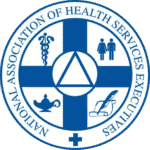Explore the anticipated salary for Federally Qualified Health Centers (FQHC) in 2024. Gain insights into the expected compensation trends, helping healthcare professionals stay informed about financial prospects in the evolving healthcare sector.
How do Federally Qualified Health Centers (FQHCs) compensation models differ from non-community health organizations? Compensation in the healthcare sector is dynamic and multifaceted, influenced by factors such as government funding, regional disparities, clinic management, leadership, and the evolving nature of healthcare delivery. This blog looks at FQHC compensation trends, including general market dynamics affecting how these organizations will pay staff in 2024.
General Labor Market Overview
It shouldn’t be surprising that FQHCs will face a tight labor market in 2024, as will their non-community healthcare counterparts. Employers will respond with higher salary offerings averaging a 4% overall increase. The latest surveys show that 70% of employers across healthcare plan on increasing salaries. Organizations continue to cite staff retention levels as problematic. When coupled with the ongoing and chronic staffing shortages community healthcare providers face, it is clear that challenging times are ahead. One recent survey showed community healthcare providers ranked nursing as the top category where they saw workforce losses. The National Association of Community Health Centers (NACHC) says staff retention issues are primarily caused by workers who leave these organizations for higher salaries. What factors will continue to affect salary and compensation plans for community healthcare providers as we enter 2024?
Factors Affecting FQHC Compensation
Several factors affect community healthcare, making these organizations different from their non-FQHC counterparts in the industry.
Emphasis on Access to Care
FQHCs, being community-focused entities, receive federal funding to support their mission of providing accessible and affordable healthcare to underserved populations. This emphasis on accessibility often translates into a commitment to hiring and retaining qualified healthcare professionals, including physicians, nurses, and support staff. The compensation plans at FQHCs frequently reflect this commitment, with competitive salaries aimed at attracting talent dedicated to serving the community.
Non-community health organizations, while also prioritizing patient care, may have different financial structures and funding sources. Their compensation plans might be influenced by factors such as private funding, insurance reimbursement rates, stockholder expectations, and the organization’s financial health. As a result, the emphasis on access to care may manifest differently in compensation structures compared to FQHCs.
Regulatory Environment and Funding Sources
FQHCs operate within a regulatory framework that includes the Health Resources and Services Administration (HRSA) guidelines. These guidelines dictate the provision of care to underserved communities and often come with specific requirements, such as a sliding fee scale for services based on patients’ ability to pay. The funding structure of FQHCs, which includes federal grants and cost-based reimbursement for Medicaid services, can influence the compensation plans, ensuring a balance between financial sustainability and community service.
Non-community health organizations may have greater flexibility in their funding sources. Depending on the organization’s size and structure, funding could come from private insurance, philanthropy, and research grants. The flexibility in funding sources may impact compensation structures, allowing for salary and benefit package variations compared to FQHCs.
Holistic Approach to Patient Care
FQHCs often adopt a holistic approach to patient care, addressing immediate healthcare needs and factors contributing to overall well-being, such as social determinants of health. This holistic perspective may extend to their compensation plans, including incentives or benefits to support healthcare professionals in delivering comprehensive, patient-centered care.
Non-community health organizations may also prioritize holistic patient care, but the emphasis might vary based on the organization’s mission and strategic priorities. Compensation plans in these organizations could align with specific objectives, such as research initiatives, specialized clinical services, or educational programs.
Market and Geographic Variances
Compensation in FQHCs and non-community health organizations is influenced by regional variations in the cost of living, demand for healthcare services, and the competitive job market. Urban and rural disparities, as well as state-specific regulations, can impact the overall compensation landscape.
New Partnerships for FQHC Hiring in 2024
While FQHCs and non-community health organizations share the common goal of providing high-quality healthcare, their compensation plans in 2024 may exhibit nuanced differences. FQHCs, driven by a commitment to community service and federal regulations, may emphasize accessibility and holistic patient care in their compensation structures. Non-community health organizations, with diverse funding sources and potential variations in mission focus, may exhibit different patterns in compensation to attract and retain talent in an ever-evolving healthcare landscape. Understanding these distinctions is crucial for healthcare professionals navigating the job market and for organizations striving to remain competitive in recruiting and retaining the best talent.
UHC Solutions offers FQHC and other community health organizations a resource to help them in their hiring efforts. We are the number one recruiting firm devoted to community healthcare. Our team is standing by to help you meet your hiring goals in an always-challenging marketplace. Call us to find out how we can help.




